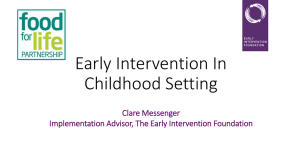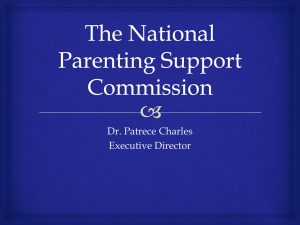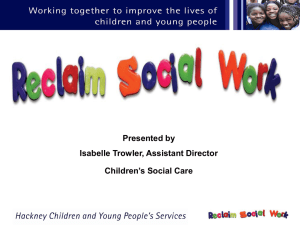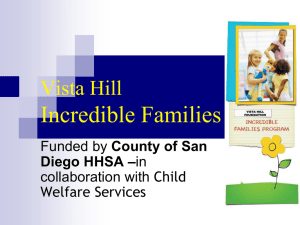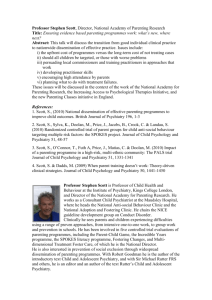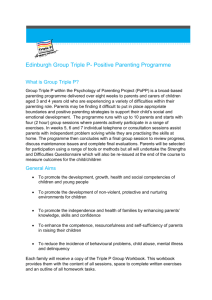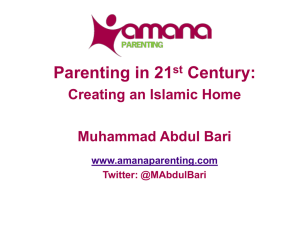An Economic Evaluation of the Incredible Years Toddler Parenting
advertisement
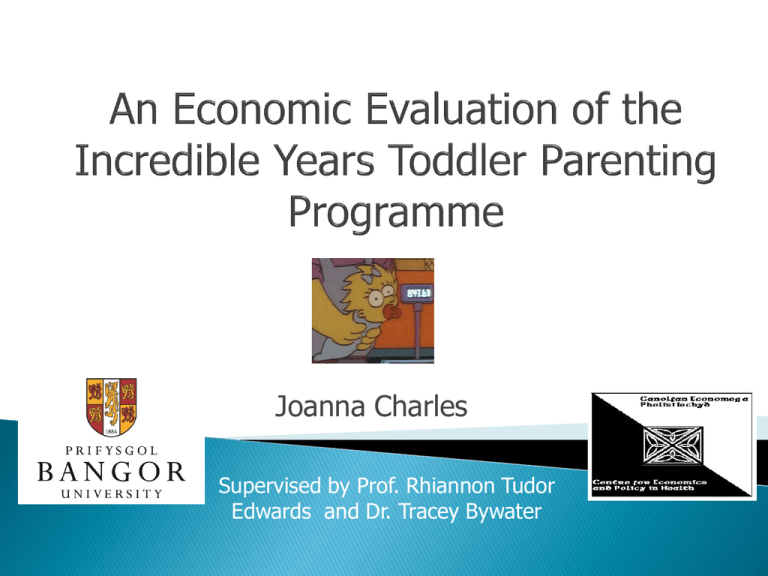
Joanna Charles Supervised by Prof. Rhiannon Tudor Edwards and Dr. Tracey Bywater Conduct disorders cost the public health system significantly; Knapp et al. (1999) found 30% of child consultations with general practitioners were for CD. Knapp et al. (1999) also found the cost of treating a child with CD on the NHS was £2457. Scott et al. 2001 found that the cost of public services for those aged 28 years with CD in childhood was 10 times higher, £70,019 than those with no history of CD, £7,423 therefore it is imperative to find a cost-effective solution to treat CD to ease the strain on the NHS. One of the most effective treatments for CD are parenting programmes. The Incredible Years Parenting programmes provide evidence based interventions designed to prevent and treat children with or at risk of CD by supporting parents in the acquisition of an array of skills to reduce negative behaviour and promote positive behaviour and interactions. Incredible Years is one of only two parenting interventions recognised and recommended by the National Institute for Health and Clinical Excellence (NICE, 2006). Previous research has shown the Incredible Years BASIC Parenting Programme to be cost effective in treating CD in children aged between 3-4 years, Edwards et al. 2007. It is important to tackle conduct disorder as it can have damaging effects on social relationships, well being, education and future prospects, Rutter and Giller (1983). Robins (1966) found 40-50% of children with CD go on to develop anti-social personality as adults. Research has also found a link between child CD and adult anti-social behaviour e.g. theft, violence, drunk driving, illegal drug use, group violence, carrying and/or using weapons, Farrington (1995) 78 mothers and their toddlers, 1-3 years old (53 intervention and 25 control), were accessed at their 6 and 12 month follow-up from the main Randomised Controlled Trial conducted by Nia Griffith, and asked to complete additional economic measures; The EQ-5D (Kind et al., 1995) and the Client Receipt Service Inventory (CRSI) (Chisholm et al., 2000). Eighteen Group leaders were asked to complete a weekly cost diary over the 12 week delivery of the programme, to establish the costs of running a group. We will fully cost the programme and calculate a cost-effectiveness ratio by dividing the mean cost by the mean effect for both intervention and control groups to show the probability that this parenting programme is good-value for money, with comparison to previous work such as Edwards et al’s work on the BASIC programme. We will establish if service use and therefore costs of service use decreases after attending a parenting programme and cost a 1 point improvement on the BDI (Beck et al. 1961) to bring parental depression below clinical cut-off. This programme will be evaluated using MRC (2008) guidelines on designing and evaluating complex interventions Complex interventions are typified by several interacting components, which present a number of special problems for evaluators, in addition to the practical and methodological difficulties of any successful evaluation. Parenting programmes should be considered complex interventions as they contain a multitude of interacting factors, have implications for many sources such as policy makers, practitioners, parents, children and siblings. A literature review of the economic evidence of parenting programmes. A paper on parents’ Quality of Life (QALY) from data obtained using the EQ-5D (Kind et al., 1995) exploring how parents’ QALY effects their children’s QALY. A paper using modelling to investigate how to model the long-term benefits of parenting programmes.

